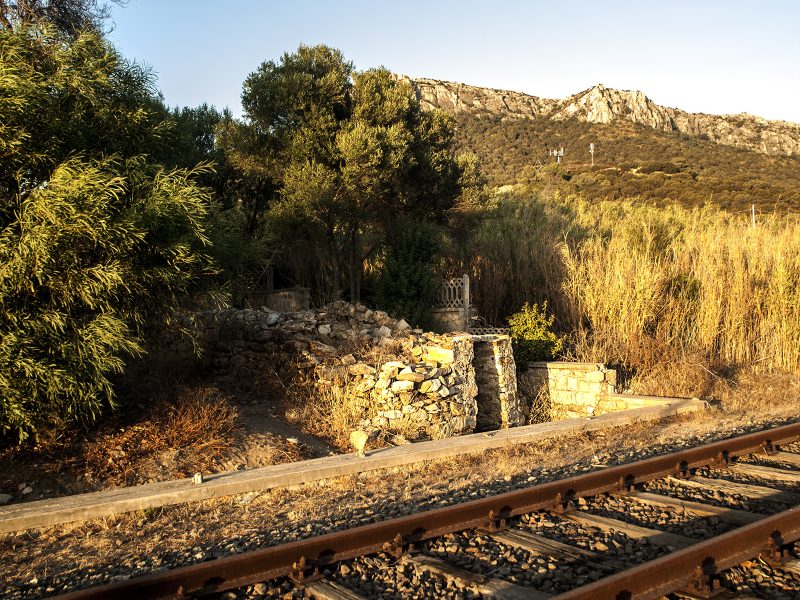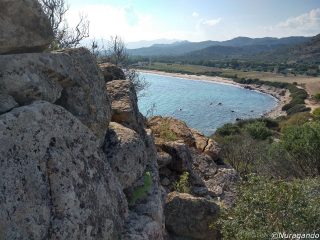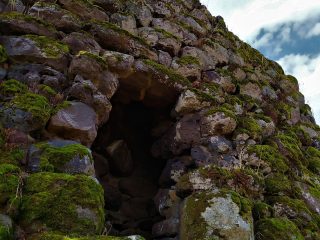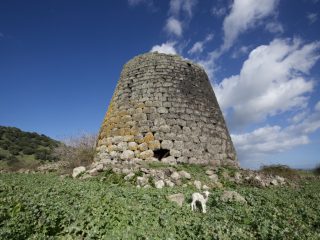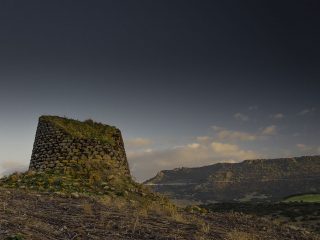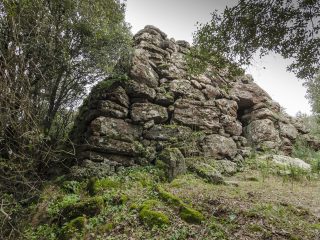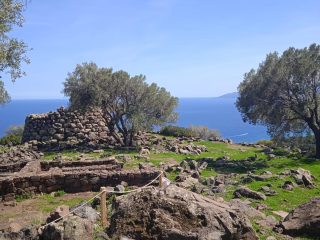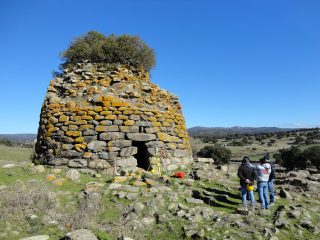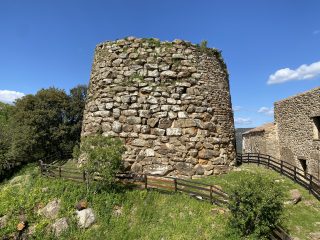The Milis sacred well is important proof of the habitation of the Golfo Aranci area during the Nuragic era. The discovery of the site, nowadays located near the railway station, dates back to 1883.
The monument was built with schist ashlars and finely worked limestone. The well chamber can be accessed thanks to SE-facing steps. This is closed with a typical tholos roof. Inside is a limestone basin for collecting water, still to this day filled from an abundant spring. Of the original forty steps, only twenty-two emerge from the water. The ramp roof consists of a series of architraves sloping in the opposite direction to the access steps.
In 1884, the researcher Pietro Tamponi found a gold ring weighing 10 grams in the surrounding area. In 1937, Francesco Soldati, in the digs carried out under the supervision of Doro Levi, recorded the finding of three bronze items: a dagger with two holes with two connected nails for cuffing: a cord bracelet; and an arched Italic clasp.
The monument was in use up until a few decades ago as a supply cistern to sailors.


